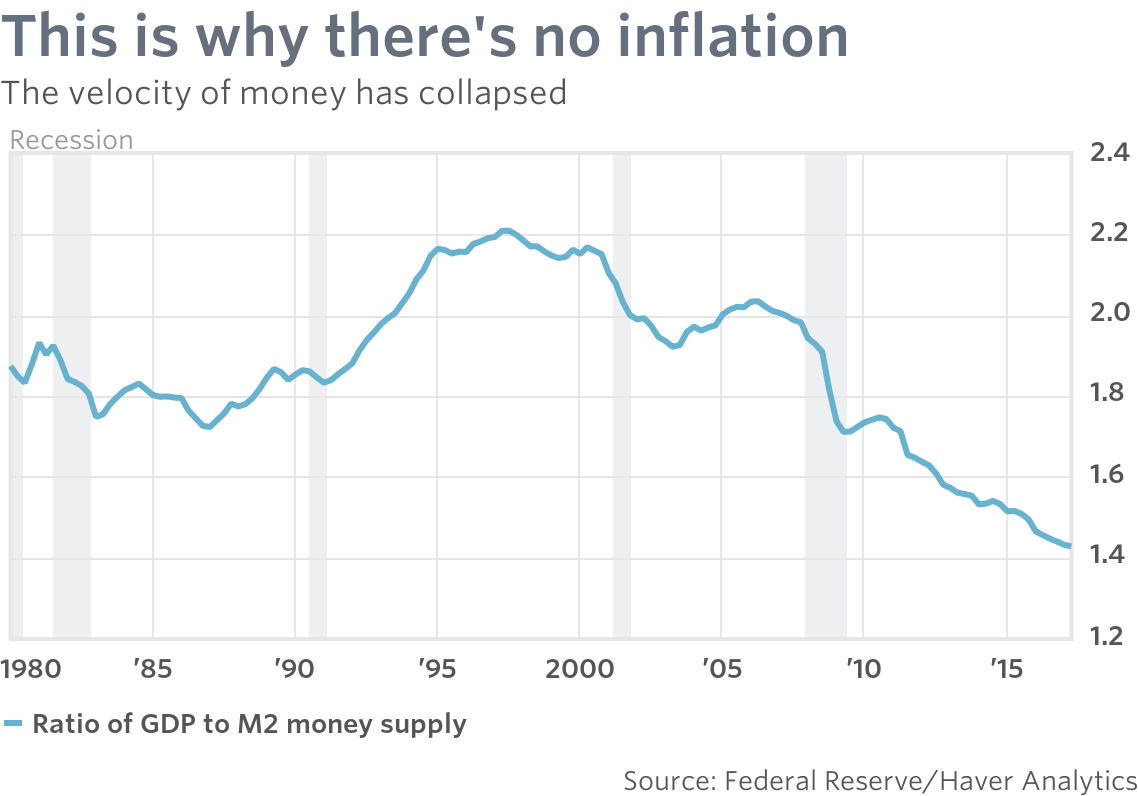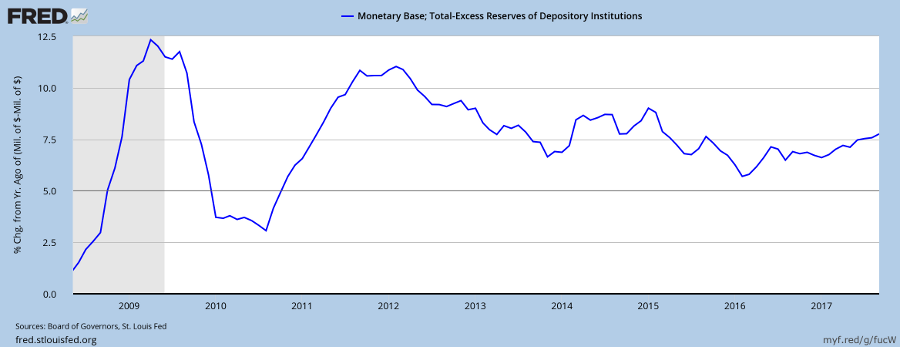One of the better composite indicators in the US, the Leading Index from the Philadelphia Fed, points to a slow-down in the US economy. A dip below 1.0% is often early, as in July 2000 and May 2006, but serves as a reliable warning of an economic slow-down.

The Leading Index predicts the six-month growth rate of the Philadelphia Fed Coincident Index. In addition to the Coincident Index, it includes variables that lead the economy: housing permits (1 to 4 units), initial unemployment insurance claims, delivery times from the ISM manufacturing survey, and the interest rate spread between the 10-year Treasury bond and the 3-month Treasury bill.
The Coincident Index combines four indicators: nonfarm payroll employment, the unemployment rate, average hours worked in manufacturing and wages and salaries.

The Leading Index signal does seem early. Low corporate bond spreads and VIX near record lows continue to indicate low market risk, typical of a bull market.

Monetary policy remains accomodative, with money stock growing at close to 5% p.a. (MZM = cash in circulation, travelers checks, money market funds and deposits with zero maturity).

The yield curve has flattened, with the spread between 10-year and 3-month Treasuries falling to 1.0% on the above graph. That is what one would expect when the Fed hikes interest rates in a low inflation environment: short-term rates will rise faster than long-term rates. But a negative yield curve, where short-term rates are higher than long-term rates, is a reliable predictor of recessions in the US economy. Each time the yield differential on the above graph crossed below zero in the last 50 years, a recession has followed within 12 months.
Underlying inflation remains low, with average hourly earnings growth below 2.5% p.a., and the Fed should be careful about single-mindedly raising interest rates without considering the yield curve.

The bull market continues but investors need to keep a weather eye on interest rates and the yield curve.

Colin Twiggs is a former investment banker with almost 40 years of experience in financial markets. He co-founded Incredible Charts and writes the popular Trading Diary and Patient Investor newsletters.
Using a top-down approach, Colin identifies key macro trends in the global economy before evaluating selected opportunities using a combination of fundamental and technical analysis.
Focusing on interest rates and financial market liquidity as primary drivers of the economic cycle, he warned of the 2008/2009 and 2020 bear markets well ahead of actual events.
He founded PVT Capital (AFSL No. 546090) in May 2023, which offers investment strategy and advice to wholesale clients.





























